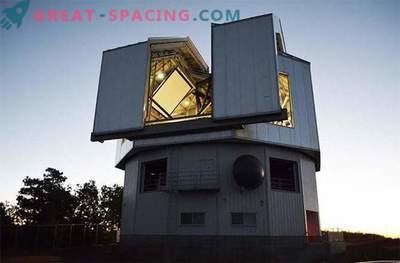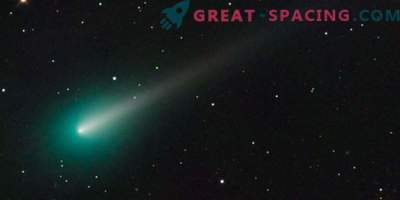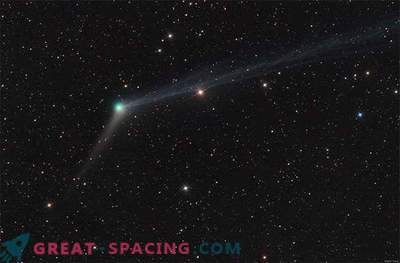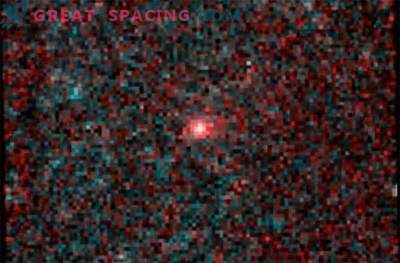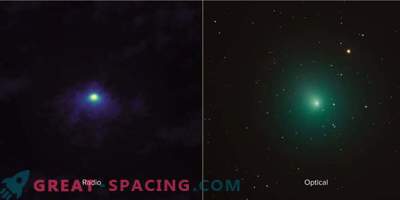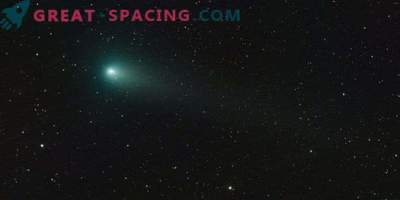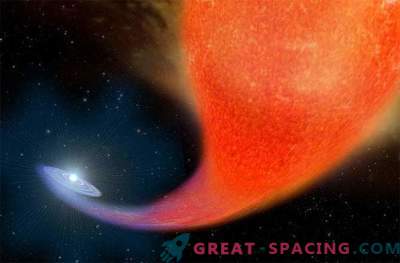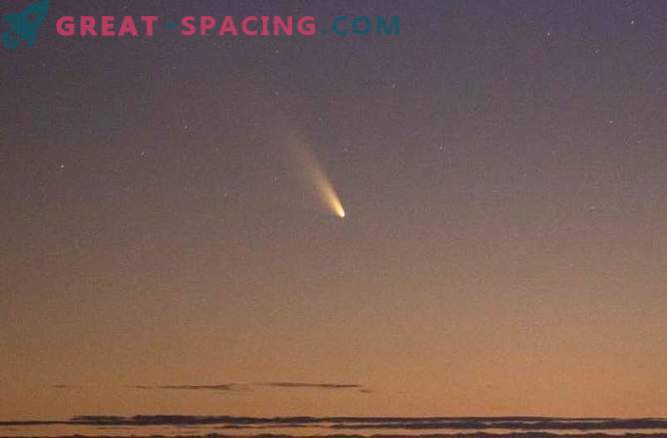
A pair of comets with very similar orbits approach the Earth. While both keep a safe distance between themselves, one of them has a record close span.
A pair of comets with very close orbits approach the Earth and astronomers are preparing to use radio telescopes to get radar images, while advanced amateurs can catch images of each of the comets twins. It is already known that comet 252P / LINEAR 12 will pass by the Earth on March 21, 2016 at a distance of 3290000 miles (5.3 million kilometers). This is about 14 times the distance from the Earth to the Moon and, by itself, does not set any records.
Astronomers Matti Knight, Michael S. P. Kelly, and Silvia Protopapa discovered the tail at “2016 BA14” using the Discovery Channel Telescope, operating at the Lowell Observatory. Has comet 252P split into two parts? We will find out soon.

Image of comets 252P / LINEAR (left) and P / 2016 BA14 (right), taken on March 1 and 2, 2016, respectively.
Comet P / 2016 BA14 (Pan-STARRS) will safely pass by Earth on March 22, 2016, coming closer than comet 252P. The flyby of comet P / 2016 BA14 will pass at a distance of 2199933 miles (3.5 million kilometers) or about 9 lunar distances, which is very close for a comet. In fact, Comet P / 2016 BA14 will set a record as the third comet that has traveled a short distance to our planet in the entire history of such cases.
Astronomers have seen many more nearby asteroids at a closer distance, but ... comets are another matter. No, for our planet there is no danger, because 9 lunar distances are a very safe distance.
What kind of comet came closest to Earth than any other comet in the history of mankind?
First place goes to comet D / 1770 L1 (Lexell). It passed only at a 5.9-lunar distance in July 1770. This is approximately 1.410.100 miles (2.3 million km). So close that Charles Messier noted that the comet's coma looked about like the four visible moons.
According to astronomers, comet 55P / 1366 U1 (Temple-Tuttle) passed by the Earth in October 1366 at 8.9-moon distances.
In May 1983, comet C / 1983 H1 (IRAS-Araki-Alcock) passed at 12.2-lunar distances. So comet IRAS, which is currently in third position, will soon retire to become the fourth closest comet discovered this year (P / 2016 BA14).
Since comet IRAS has traveled at 12.2-moon distances, the upcoming flight of P / 2016 BA14 will be the closest comet in the last 246 years!
Will it be noticeable?
Comets will look bright when they begin to pass close to the Sun and react to the heat of the sun. And although Comet P / 2016 BA14 will pass relatively close to our planet, its close distance to the Sun will make it very dull. So that the naked eye can not see it. In addition, P / 2016 BA14 is a small comet, with a core size of 1411-1788 feet in diameter (430-545 meters). If there is no difference in brightness, scientists have calculated that comet P / 2016 BA14 should have 12 or 13 stars. led., which means that it can be captured only by large telescopes. The good news is that we will catch a beautiful view with a famous telescope orbiting it. Astronomer Michael Kelly of the University of Maryland said: "We provided 6 orbits of the Hubble telescope with time to get some high-resolution photos during a close passage."
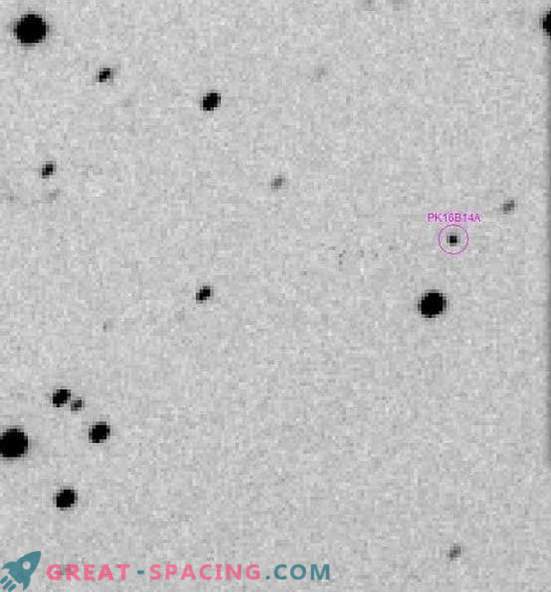
Photograph of Comet P / 2016 BA14, taken by Stephen M. Tiley
The relative proximity of the comet to our planet will lead to the fact that images obtained with the help of advanced amateurs and observatories clearly demonstrate the movement of a celestial guest moving in space at a speed of 31, 345 miles per hour (50445 km / h).
Both comets will also be studied using radio telescopes. From March 20 to March 23, astronomers will send radio signals to Comet P / 2016 BA14 using NASA Goldstone radar in California. These signals will bounce off the comet's nucleus and travel to the Green Bank radar in West Virginia.
The Arecibo Observatory in Puerto Rico has the best “radar view” of the comet 252P / LINEAR, and will receive radar images of the sky guest on April 10-18.
Will twin comets produce meteors?
Most likely no. But some astronomers believe that there is little opportunity to see several meteors associated with comet P / 2016 BA14 on March 20, 2016. At the same time, its twin 252P / LINEAR will produce several meteors on March 28-30.
